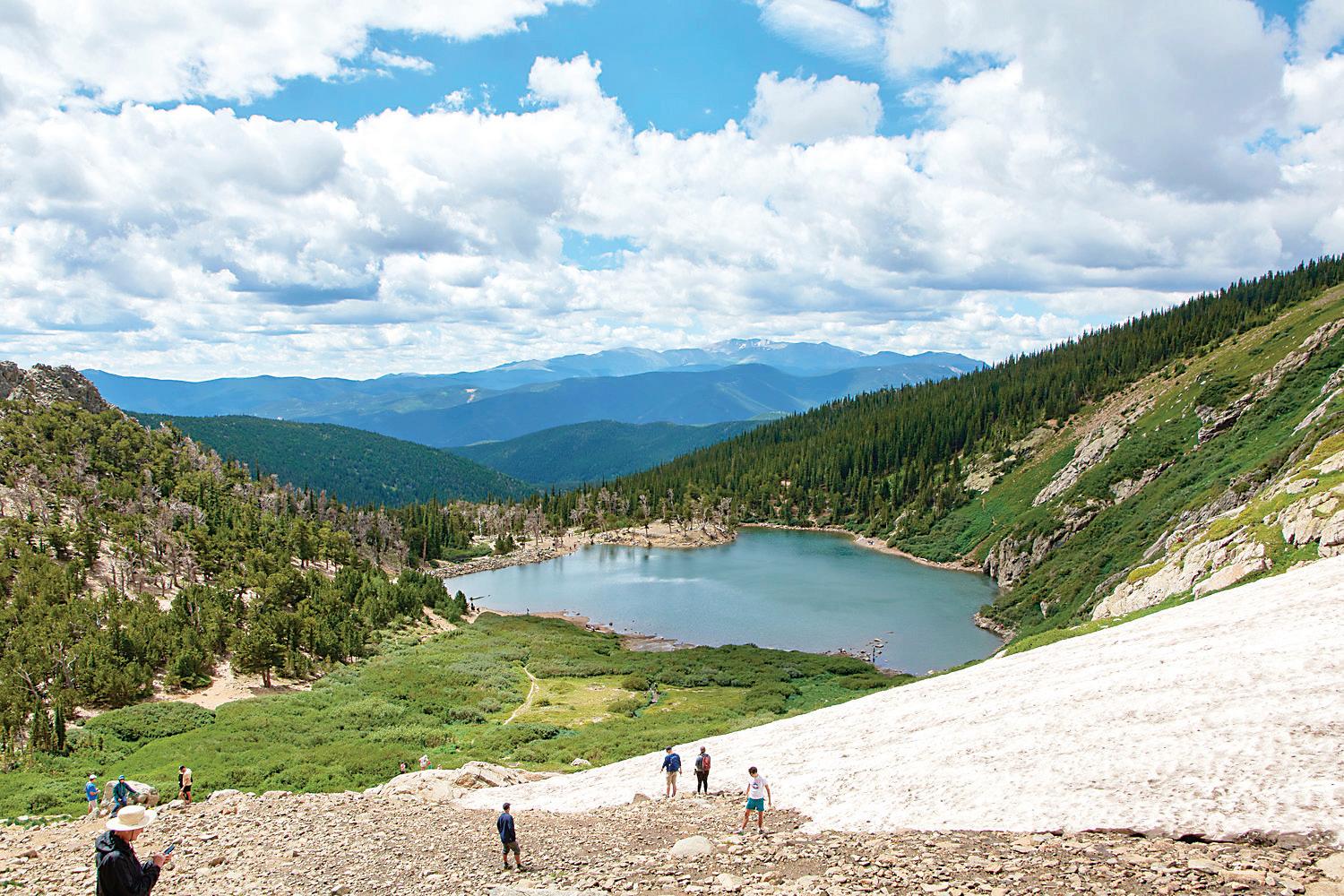
4 minute read
Colorado snowpack tops 140% in good year Tiny home village a vision for a ordable housing group
Plans for 10 units for young adults depends on funding, local approvals
BY BELEN WARD BWARD@COLORADOCOMMUNITYMEDIA.COM
If Ashley Dalzell has her way, the vacant lot next to her Access Housing o ce in Commerce City will become a tiny home campus, o ering transitional housing for young adults.
Dalzell, executive director for Access Housing, is negotiating to use a plot of land in Commerce City to build tiny homes and expand transitional housing services for families and people under the age of 25, emancipated high school students and young people that have aged out of the foster care system.
BY JERD SMITH FRESH WATER NEWS
Like other Western states, mountain snowpacks in Colorado are closely monitored because as they melt in the spring and summer, their runo delivers much of the state’s water.
tering 145% of average, according to the Natural Resources Conservation Service Snow Survey.
Dalzell said she has a grant from Adams County for the development of a traditional eight-unit a ordable housing development. She’d prefer to do something di erent, where the tenants have a bit more privacy.
Colorado is awash in white this spring, with statewide snowpack topping 140% of average this week, well above the reading a year ago, when it stood at just 97% of normal.
“Conditions in the American West are way better than they were last year at this time,” state climatologist Russ Schumacher said at a recent joint meeting of the Water Availability Task Force and the Governor’s Flood Task Force. “In Colorado we went from drought covering most of the state to most of the state being out of drought.” e snow is deepest in the southwestern part of the state, where the San Juan/Dolores river basin is seeing a snowpack of 179% of average. e Yampa Basin, in the northwest corner of Colorado, is also nearing historic highs, with snowpack regis- ere is considerably less white stu east of the Continental Divide in the Arkansas River Basin, where snowpack remains slightly below average and in the South Platte Basin, where snowpack is just above average.
A drought considered to be the worst in at least 1,200 years has devastated water supplies across the West. While no one is suggesting the dry spell is over, Colorado water ofcials said 2023 will likely allow for a signi cant recovery in reservoirs and soil moisture.
A long line of cars outside the city of Brighton’s rapid testing site at Riverdale Regional Park. The site has had to close early many days in recent weeks due to high demand. Adams County’s 14-day test positivity rate was 15.9 percent, as of Nov. 17, according to Tri-County Health Department. Brighton and Commerce City’s test positivity rates were both higher than 13 percent. Forty- ve people in Brighton and 29 in Commerce City have died from COVID-19 related health issues. To limit the spread of COVID-19, at least 15 counties moved to tighter restrictions that prohibits indoor and personal gatherings.
By Ellis Arnold Colorado Community Media
As Denver metro counties continue to inch closer to local stay-at-home orders under Colorado’s system of coronavirusrelated restrictions, the state announced a new level of rules that prohibits indoor dining and personal gatherings — a change that applies to the majority of the Denver metro area and many counties in other regions.
e outlook for the seven-state Colorado River Basin has improved dramatically as well, with the U.S. Bureau of Reclamation, in its March 15 report, showing that Lake Powell is likely to see some 10.44 million acre-feet of new water supply by the end of September, or in ows at 109% average.
e state’s COVID-19 dial, which has been in e ect since September, is the set of di erent levels of restrictions that each county is required to follow based on the severity of a county’s local virus spread. e dial grew out of the state’s safer-athome order — the policy that came a er the statewide stay-at-home order this spring and allowed numerous types of businesses to reopen. e state recently switched to color identi ers — levels blue, yellow and orange rather than numbered levels — to avoid confusion. Until Nov. 17, level red meant a stay-at-home order. Now, level red — “severe risk” — is the second-
“We are looking for support for the development and asking the Commerce City Council for approval,” Dalzell said.
Dalzell said her vision is to build a tiny home village and collaborate with various community groups, including local high schools.
“ e tiny home village would be like the ones you see on TV, each with its own kitchen, bathroom and loft with a bedroom,” Dalzell said. “By owning the property, we can invest in the property, and provide a bathroom and kitchen in each individual unit.”
Please see RESTRICTIONS, Page 2
Dalzell said she knows it’s a di erent concept and is excited to work with the city planners and commissioners to bene t a wide variety of individuals and young people that need their assistance with housing –starting with Commerce City.
“We are having preliminary conversations, with the focus on purchasing this piece of property in Commerce City, and also looking at a wide variety of property in Adams County,” she said.
She can’t say when the project will come to fruition, but she’s hopeful.
“As of March, we have come to somewhat of an agreement with current landowners,” she said. “So we’ll see if this probability is more of a reality here in Commerce City jurisdiction for unhoused residents.”

Dalzell and her team have purchased a prototype tiny home to demonstrate the project to planning o cials. It’s currently located at her o ce near 70th and Colorado Boulevard in Commerce City.
“ ese tiny houses have plumbing and bathroom inside the unit. So, launching a tiny home village is another layer of complexity,” Dalzell.
Transitional Housing
Access Housing has called Commerce City home for almost 40 years. ey serve all of Adams County and run a transitional shelter for families with children.
“In our current program here on the property, our sta sees the families daily, and our o ce is next to the shelter,” she said. “Our existing shelter has eight units, each with a two-bedroom apartment with its own bathroom, kitchen, and living room area.”


Dalzell said they prefer to manage smaller housing projects because it lets them have a single case manager for eight families. She hopes to use that vision for the tiny home village, creating a small neighborhood setting.
“It’s a friendly neighborhood to get





